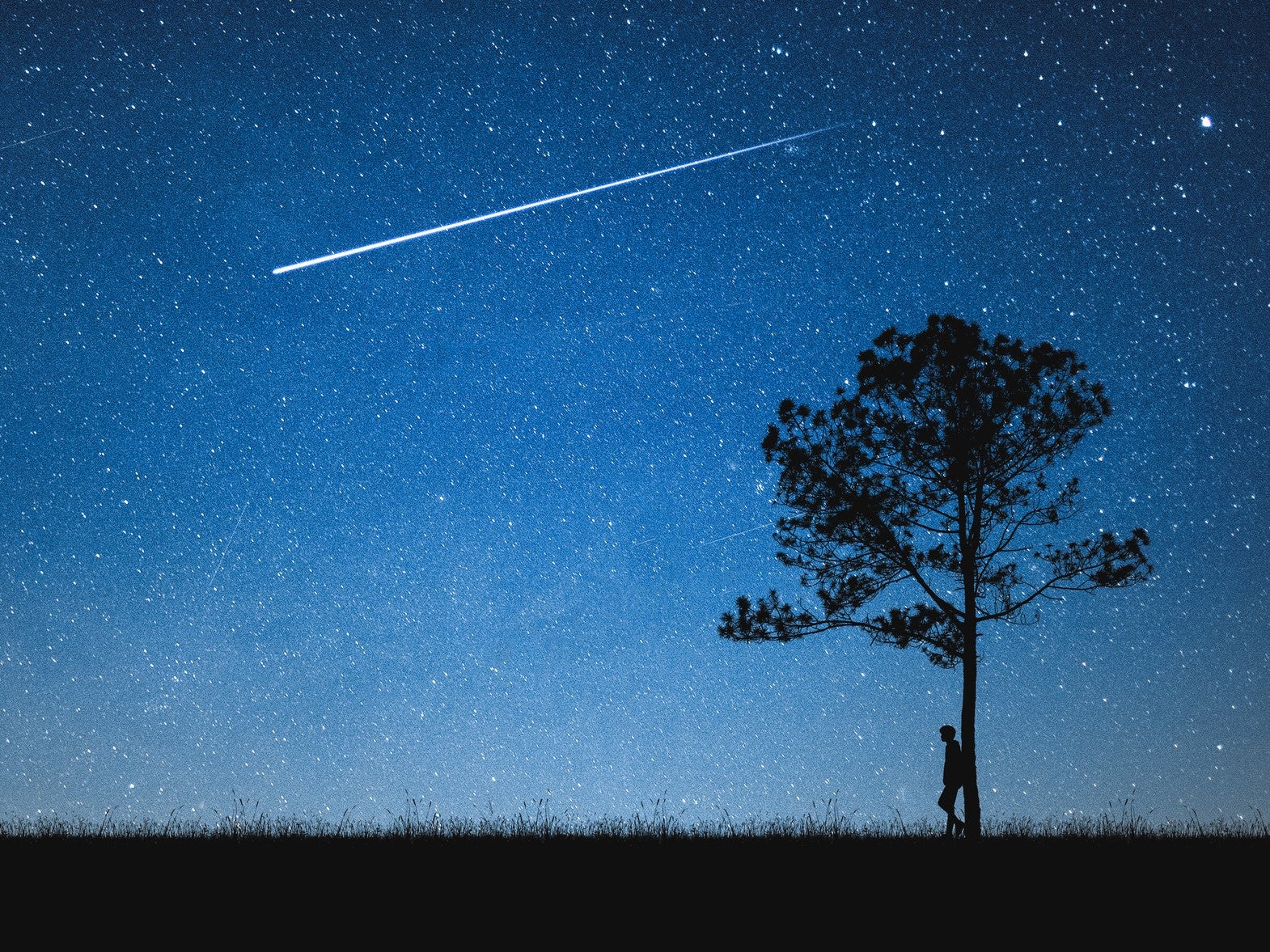Eta Aquarid meteor shower 2022: When is the best time to watch it?
Shooting stars to light up night sky on 5-6 May

The Eta Aquarid meteor shower is set to peak between May 5 and 6 in 2022, when you will be able to see up to 50 meteors in an hour. The best views of the celestial spectacle occurring just before dawn. The meteor shower will also be visible until the 27th of May.
The Eta Aquarids take place when the Earth passes through the tail of Halley’s Comet, which passes Earth every 76 years.
The ‘shooting stars’ that appear are when dust, stones and other debris from the comet’s tail burn up in the Earth’s atmosphere.
“Fast meteors can leave glowing ‘trains’ (incandescent bits of debris in the wake of the meteor) which last for several seconds to minutes,” Nasa explained on its website.
“Fast meteors can also sometimes become fireballs: Look for prolonged explosions of light.”
Weather conditions for viewing the Eta Aquarids will be largely favourable in the UK, according to forecasts from the Met Office, with clear skies across most parts. Northern Ireland and Scotland will experience some cloud.
The best view of the meteor shower will be seen in areas with low light pollution, far away from cities and other bright lights.
No specialist equipment is required to see them, though viewers are advised to allow up to 20 minutes to allow their eyes to adjust to the dark.
The sky will appear even darker than usual due to the timing of the Moon’s cycle, which is currently in a waxing crescent phase and only 15 per cent full.
The Aquarids appear to eminate fro the constellation Aquarius, which is easiest to see in the Southern Hemisphere.
Despite peaking on 5-6 May, the meteor shower will be visible from 15 April to 27 May.
Join our commenting forum
Join thought-provoking conversations, follow other Independent readers and see their replies
Comments
Bookmark popover
Removed from bookmarks